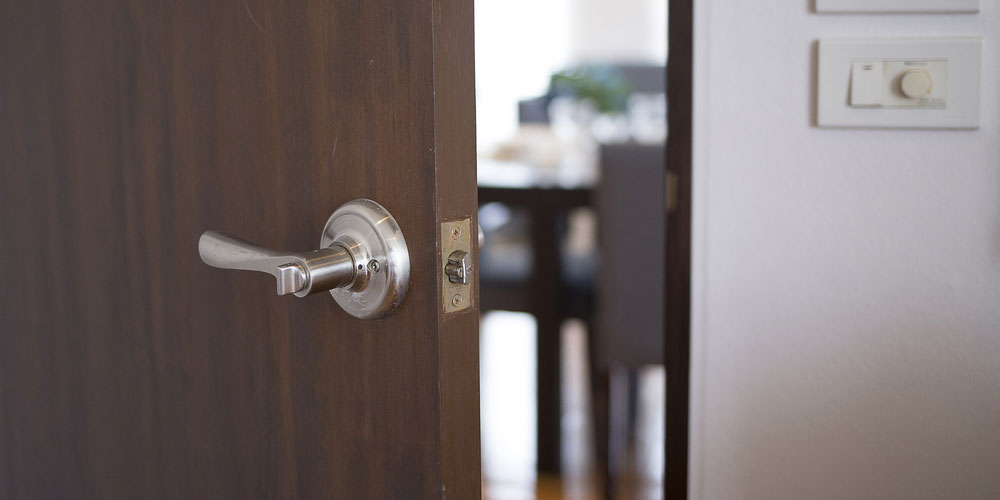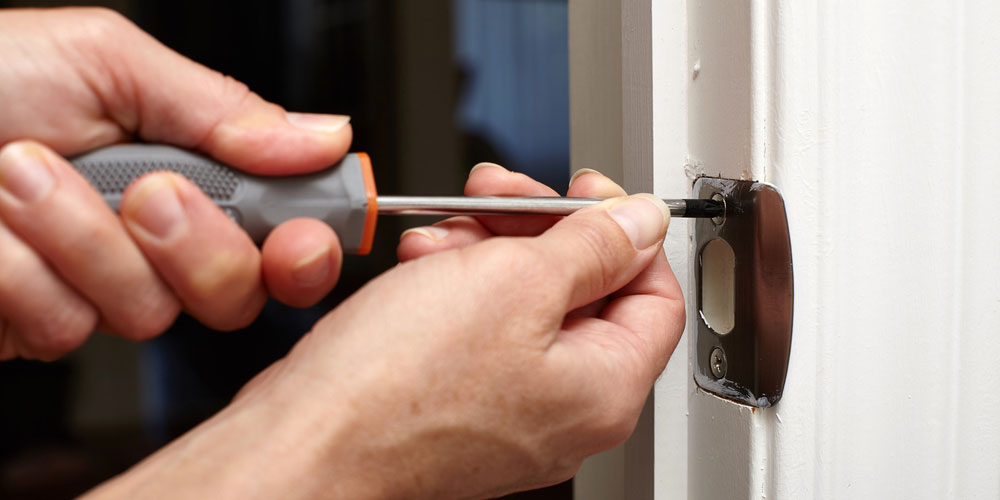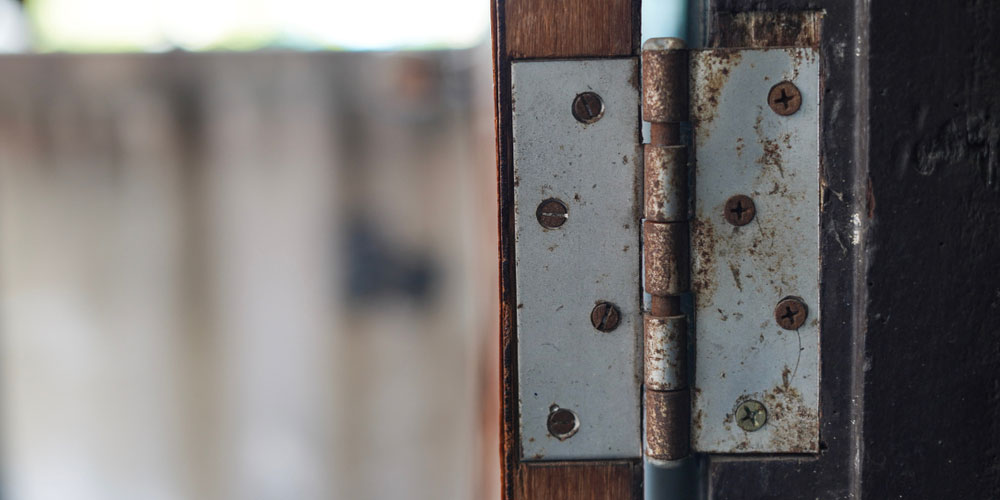Lock Blog
A resource for consumers, locksmiths, and security professionals
A resource for consumers, locksmiths, and security professionals

When a door won’t close or if a door keeps opening on its own, your safety and security are diminished. To keep doors closed, you may need to fix more than the lock. The door jam might be warping. The hinges could be sagging. The strike plate may be slipping.
Whatever the reason your door won’t close, there is information in this article that can help you find your fix. In the event that you are unable to perform the work yourself or desire the trained hands of a professional, you can always call a locksmith.
If your door won’t close, here are the most likely reasons:
When a door won’t close, it is due to an issue with the door or the lock. But it will always result in the latch or bolt not securing into the strike plate correctly. When the lock’s latch bolt is not holding in that catch, the door can open with a gust of wind or just on its own.
It is best for safety and security that doors stay closed reliably. Closed doors can prevent burglary, assist with privacy, and the Fire Safety Research Institute (FSRI) has determined that a closed door can save your life during a fire. If your door won’t close, you are at risk.
It is possible to lock a door without a lock with door wedges, improvised barricades, etc. The issue with closing a door without a latch is that these devices harm the ease of egress. When you cannot exit through a door quickly, it becomes a safety risk.
You can insulate a room more effectively when the door is closed. Closing a door limits airflow so a room can heat up quicker. For air conditioning, the larger the space being cooled, the more energy and time it takes. When a door won’t close, the room stays a part of a larger space.
If you keep doors closed, it is better for your security. Even interior doors may need to be closed for security while living with roommates. However, not every door is intended for security. Bathroom door locks, for example, are intended to offer privacy. Whatever a door’s purpose, it cannot be served when the door won’t close.
All manner of flotsam and jetsam can accumulate in the catch of the strike plate. Wood or material from the door jam can come loose, partially blocking the catch hole. With the door open, take a look at the hole in the door jam that the latch should be falling into.
In commercial spaces as well as industrial settings, strike plates may be purposefully blocked with debris. This is a trick burglars use so a door won’t close properly, and they can regain entry after a building’s normal operating hours. Prison locks often confront this from prisoners.
You should also check that there is not anything leaning against the door or catching between the door and the jam. Fabric from jackets hung on coat racks behind a door can sometimes prevent complete closure.
If you are attempting to fix sliding door locks, you should also be looking for debris on the tracks. Any excess material on the track of a sliding door can draw the door back. So even if you can bring the sliding door shut, the door won’t stay closed. The time between reopening may vary.
Door Won’t Close Tip #1
Once you locate the debris, you can remove it. If material from the door or jam has come loose or broken, you may need to cut or chisel the jutting protrusion. For gunky or sticky substances, you should also clean the surface with soap and water.
When a door won’t close properly, check the openings along the top, bottom, and sides of the door. The wood in both solid core doors and hollow core doors can expand to the point where their gaps close and drag on the doorway.
Interior doors that use hollow cores are less susceptible to this type of weathering because they use very little wood. However, the foundation of the home can lift and change any doorway tolerance. And with that change, adjustments to the hinges or strike are ill-advised.
With the foundation shifting, roots raising the ground, or the wood of door jam expanding, you may need to adjust the door itself. Look around the edges of the door and locate the tightest tolerances. Mark how much of the door needs to be trimmed.
These problems are likely to worsen over time, so whatever you are doing to fix the issue, you need to continue to do it periodically. For better home security, you should address the source of the issue and not just focus on the symptom of the doorway tolerance.
Door Won’t Close Tip #2
Tight doorway tolerances can keep doors closed even when you want them open and make it so a door won’t close. If you are having trouble opening and closing a door, this is a sign that the door tolerance is too tight. But if there is no sign of tolerance issues, you may need a new lock.

When any door won’t close, there is often an issue with how the strike plate is aligned. Your doorway tolerances changing can create this issue, as can your hinge alignment. But you can diagnose and fix the issue by focusing on the strike plate exclusively.
Some patented locks require special strike plates or deeper catch holes. If this is your issue, it will not be that a door won’t close, but rather that the lock will not fully engage. This is an important distinction because it ultimately informs the proper solution.
If you over-adjust or replace the strike plate every time you replace interior door knobs, the door jamb can become more fragile, and the door will be less secure. When a door won’t stay closed, you do not want to replace it with a door that, when closed, offers almost no security.
To keep doors closed, the latch needs to fall into the catch of the strike plate. As you close the door, look at how the latch is aligning with the strike plate. A spring-loaded latch found on door knobs is not intended for physical security, but you must keep doors closed when required.
Door Won’t Close Tip #3
You need to fix the underlying cause of the strike plate misaligning. If you do not, the issue will recur and likely worsen. You can only expand or move your strike plate so much before you have weakened the door jamb to where it will need complete refurbishment.
When a door keeps opening, make sure the latch is extending correctly. A stuck door latch might not fully extend into the catch of the strike plate. You may have to fuss with the handle or push at the latch a few times, but see if you can get the latch to come out.
For most sticky spring-loaded latches, you can apply door lock lubricant to the latch and cycle the device a few times. A cycle refers to the full retraction and extension of the latch. If the lubricant is working, the cycles should become increasingly smooth until the sticking is gone.
Lubricant is not always the solution. The problem you are experiencing will determine the best way to fix a stuck door latch. The connection between the handle and the latch may be broken entirely, or the latch could be sticking every once in a while.
When the reason a door won’t stay closed is isolated to a stuck latch, changing locks will solve the issue. This is not the case for all other reasons a door won’t close. Finding a fix takes time. For offices and retail spaces, the simplicity, and efficiency of commercial door lock replacement.
Door Won’t Close Tip #4
If you replace a door knob with a deadbolt, you are not going to experience a sticking latch because the bolt is fully thrown. Even when the new deadbolt begins to get sticky, you will be able to tell that it is not fully engaged, so you are not surprised if the door keeps popping open.

The first thing you can do to check on your hinge alignment is open the door and push and pull it in different directions. If the door wobbles, one of the hinges is probably loose. Use a screwdriver and tighten the hinge screws and see if this solves the issue.
The issue with tightening these screws is the hole is being stripped, which widens the hole and allows the hinges to sag even more over time. To offset this risk, you can use the opportunity to improve front door security by replacing the set screws with 3-inch screws that dig into the stud.
In the event the door does not wobble, and the hinge screws are tight, but the door won’t close, you may still be able to fix the issue by adjusting the hinges. Minor adjustments can be made with printer paper, cardboard, or other cuttable and compressible flat sheets.
Remove the hinge. Stack or fold the sheets to the desired width and place them between the jam and the hinge as you reinstall. The thicker the sheet, the more the door will adjust. Pack the bottom hinge to move the door up, and use the top hinge to move the door down.
Door Won’t Close Tip #5
Check your door hinges as a part of your standard lock maintenance. If the metal is heavily corroded or misshapen, consider replacing the hinges. However, the repeated replacement or readjusting of hinges can exacerbate issues with hinge alignment.
Instead of looking up how to change a door knob when a door keeps opening, go through the troubleshooting process and determine whether there is an issue with the lock, strike plate, doorway, hinges, etc. You may find that the best solution has nothing to do with the lock.
For more information on what to do when a door keeps popping open, please leave a comment below. And if you would like United Locksmith to help solve your problem, see if we service your area.
Category: Commercial, How To's, Residential, Safety & Security